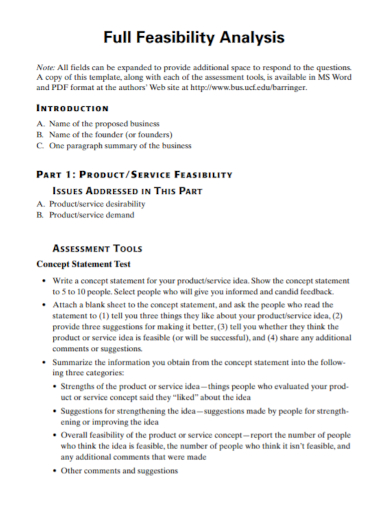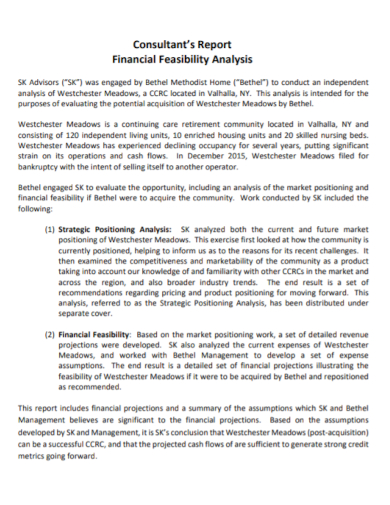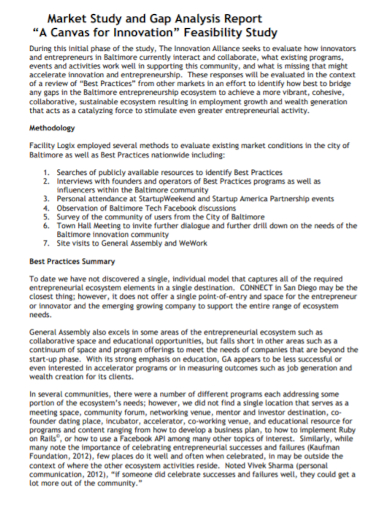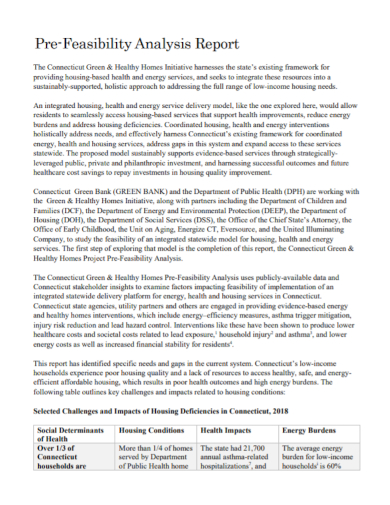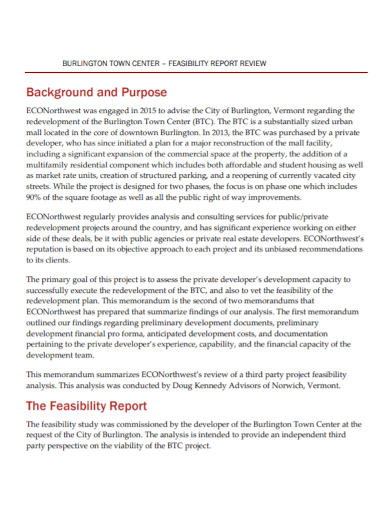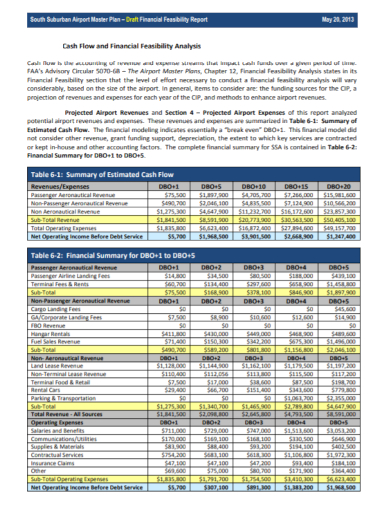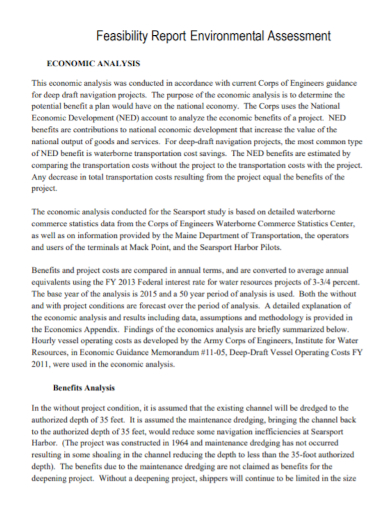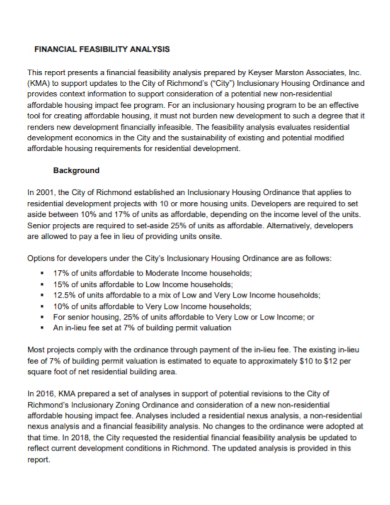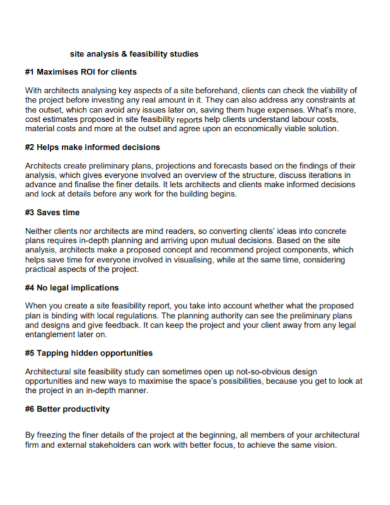All new projects and ventures require time, effort, and resources in order to be fulfilled. And Project developers such as yourself would, of course, not want to see the venture fail. You don’t want to invest so much time and resources onto something that has no clear direction of where it’s going. That would be a massive waste of valuable resources and you didn’t even get anything back from it. That is severely undesirable for developers like you because it would mean that you only invested resources for absolutely nothing. That may be why you’re here, reading this article. To look for something or look for a way to evaluate a project before it even begins development, and help you decide whether the venture is worthwhile or not.
There is no better way to achieve this than writing a Feasibility Analysis Report, also know as a feasibility study or just a feasibility report. Feasibility reports look into the intricacies of your projects to gather necessary data and helps you analyze these data to provide you information to make an informed decision regarding the fulfillment of the project. But drafting a feasibility analysis report is really not easy for everyone, or anyone for that matter. The document requires a lot of data collection and data analysis to make sure that you are getting everything you need to know. It’s an undertaking that requires a lot of commitment because the fate of the project literally lies on this document. It’s a lot of pressure, I know, but we’re not here to discourage you, in fact, we’re here to help. To ensure that your feasibility analysis report is properly drafted, we have several examples listed below that you can study or use as a guide in creating a well written feasibility report.
10+ Feasibility Analysis Report Samples
1. Full Feasibility Analysis Report
2. Feasibility Data Analysis Report
3. Consultant Financial Feasibility Analysis Report
4. Market Feasibility Analysis Report
5. Market Feasibility Study Analysis Report
6. Pre-Feasibility Analysis Report
7. Feasibility Analysis Review Report
8. Cash Flow Feasibility Analysis Report
9. Feasibility Analysis Assessment Report
10. Feasibility Analysis Project Report
11. Site Analysis Feasibility Report
What Is a Feasibility Analysis Report?
A feasibility analysis report is simply an assessment of the practicality of the proposed project or venture. As the name implies, you’re essentially asking “Is this feasible?”. It covers all aspects of the project like the resources required, the technology to achieve your goal or criteria of success, and will the project get you the return on investment that you expect. It is important to conduct a feasibility study early on so as to not waste valuable time and resources on something that has no return at all, to know if the project is worth the investment.
Sometimes, a project may not be worthwhile for a lot of reasons, it may be due to lack of funding, lack of manpower and resources to fulfill, and a lot of other factors that you have to be able to isolate early on. Feasibility reports not just analyze the project itself, but also the environment around the project. There may be threats that could pose a hindrance to the development, or there may be possible complications that you have to take into account and establish workarounds should you encounter it. Feasibility analysis reports are really important because of the valuable insights they are able to provide to the developers, it’s a really good and effective assessment of a project or a plan, and should also help you decide what step to take going forward.
How to Write a Feasibility Analysis Report
Writing a feasibility report can be quite challenging just due to the fact that there are a lot of factors to be considered and steps to take, whilst also making sure that these are done properly. Regardless of project type, size, and scope, the feasibility report helps you with your project decision making, and if the feasibility report is poorly drafted, then there’s a higher chance that you’ll be diving into this venture completely blind. There are several key steps to consider and to keep in mind in writing the document, these key steps will be discussed in more detail below.
- Conduct preliminary analysis
It is best to start with outlining your plan. You should be able to identify an unserved need in the community or in the market that you will be working with, where a demand is significantly greater than the supply. This should help you decide early on whether your project has a distinct advantage in the market, and if the obstacles are too high. - Projected Income Statement
Working on this step means to work backwards. Project your expected income from the project and what investments you might need to achieve that goal. This step takes into account what services are required and how much they’ll cost, revenue adjustments and reimbursements. - Conduct a Market Survey
This step is key to the success of your feasibility analysis report, to make it as thorough as possible. The market survey will give you a clear picture of what revenues you can expect from the project. It will consider factors such as demographics, competitors, geographic influence, market value, and the overall market response to your venture. This step is very crucial that if your company do not have the resources to thoroughly conduct this, then it is best to hire an outside firm to do it for you. - Propose the most feasible solution
After gathering most, if not, all the data you need, it’s time to make a decision. You should be able to picture out now the feasibility of your project, comparing data from your market survey to the preliminary analysis that you have made and to the criteria of success that you have established for your project. Use your experience and knowledge in the field to state the best option to take in the best and most convincing way possible. Ensure that whoever will read your feasibility analysis report realize that this solution will let the company keep to its optimal project resources and gain the best possible benefit for the company. You can use charts and graphs to assist with your presentation and provide a visual aide for the comparison that you will be making. - Review and conclusion
All of the steps above are crucial and important, but final reviews and analyses are especially important to make sure that everything is properly polished as it should be, and nothing requires any more changing and adjustments, so make sure to take some time to review your work one last time. After reviewing you should be able to write a proper conclusion by re-summarizing the project’s aim and purpose, and re-stating the best possible decision the company can make for the project’s success with keeping to its most optimal resource allocation.
FAQs
Why is a feasibility study important?
This document helps discern the pros and cons of undertaking a new project or venture before investing valuable time and resources in development. This also provides crucial information that could prevent the company from diving blindly into an unknown territory.
What are four types of feasibility?
Operational, technical, economic, and schedule.
What comprises a feasibility study?
In its most basic form, a feasibility study is comprised of a definition of a problem, an analysis of the current operation, a definition of requirements, evaluation of alternatives, and an agreed upon course of action.
Feasibility analysis reports are not just important documents in the business and corporate industry, but also to mostly everything else in the world. It uncovers new ideas that could potentially change the direction of the project and sometimes even the company itself. When done right, it’s a rather remarkable document that could save you and your company from millions of dollars worth of trouble, so be sure to take the time and care in making one. And we hope that we have lifted some of that burden off of your shoulders by giving you some samples and the necessary tips to help you.
Related Posts
FREE 10+ Appraisal Report Samples
FREE 10+ Project Financial Analysis Samples
FREE 9+ Business Report Samples
FREE 9+ Sample Technical Reports
FREE 9+ Investment Research Report Samples
FREE 7+ Sample Forensic Report
FREE 4+ How to Write a Sales Reports
FREE 21+ Business Report Writing Samples
FREE 15+ Site Investigation Report Samples
FREE 15+ Expense Report Samples
FREE 12+ Requirement Analysis Templates
FREE 10+ Checklist Trend Analysis Templates
FREE 9+ Market Research Report Samples
FREE 9+ Credit Reports
FREE 8+ Target Market Analysis Samples

